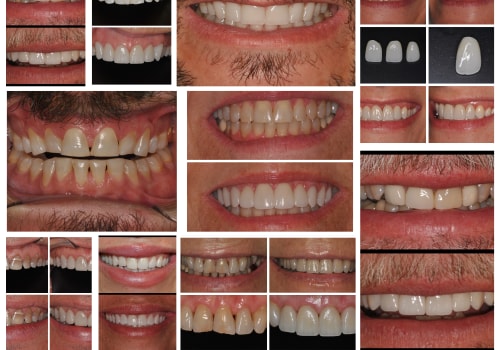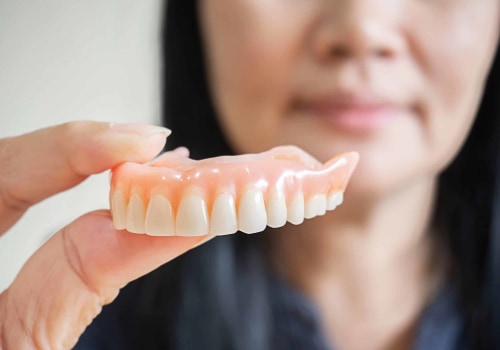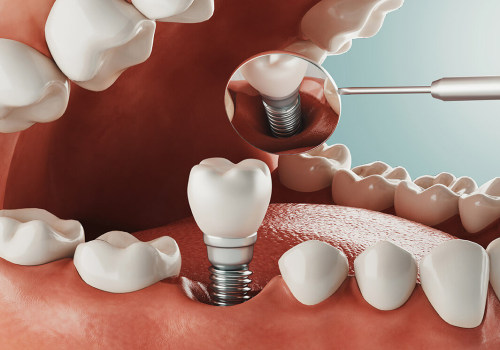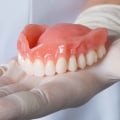Traditional full dentures are a common solution for those who have lost all or most of their natural teeth. These removable prosthetic devices have been around for centuries, providing people with the ability to eat, speak and smile with confidence. Despite the rise of modern dental technology, traditional full dentures remain a popular choice for many individuals. With the advancement of dental materials and techniques, traditional full dentures have become more comfortable and natural-looking than ever before. They are custom-made to fit each patient's unique mouth structure, making them a personalized solution for restoring a full set of teeth. In this article, we will delve into the world of traditional full dentures and provide you with all the essential information you need to know.
From the types of dentures available to their benefits and drawbacks, we will cover it all. Whether you are considering getting traditional full dentures for yourself or simply want to learn more about them, this article is for you. So sit back, relax, and let us take you through everything you need to know about traditional full dentures. By the end of this article, you will have a comprehensive understanding of this type of permanent denture and be able to make an informed decision about whether it is the right choice for you. Let's dive into the world of traditional full dentures. These are removable dental prosthetics that are used to replace all of the teeth in one or both jaws.
They are made from a gum-colored acrylic base that supports the replacement teeth. The base is custom-made to fit your mouth and is held in place by suction or adhesive. Traditional full dentures are different from other types of permanent dentures, such as implant-supported dentures, which are anchored to dental implants. To understand how traditional full dentures work, we need to start from the beginning. Once your teeth have been removed and your mouth has healed, your dentist will take impressions of your mouth to create your custom dentures.
The impressions will serve as a guide for the dental lab to create your dentures. Once they are ready, your dentist will make any necessary adjustments to ensure a comfortable fit. It is important to note that you will need to regularly clean and care for your dentures, just like natural teeth. Now, let's talk about the benefits of traditional full dentures. First and foremost, they are a cost-effective option for replacing missing teeth.
Unlike other types of dentures, they do not require surgery or dental implants, making them an affordable choice for many people. Additionally, traditional full dentures can improve your appearance by filling in gaps and providing a natural-looking smile. They can also help with speech and chewing, as missing teeth can often affect these functions. However, traditional full dentures do have some drawbacks to consider. While they can improve your appearance, they may not feel as natural as other types of dentures.
This is because they are not anchored to your jawbone like implant-supported dentures, which can cause them to slip or move while eating or speaking. It may take some time to adjust to wearing traditional full dentures and getting used to their feel. In conclusion, traditional full dentures are a viable option for those looking to replace missing teeth. They are a cost-effective solution that can improve your appearance and help with speech and chewing. However, they do have some limitations and may not feel as natural as other types of dentures.
It is important to consult with your dentist to determine if traditional full dentures are the right choice for you. Remember, maintaining good oral hygiene is key to ensuring the longevity and effectiveness of your dentures. So, make sure to follow your dentist's instructions and schedule regular check-ups for optimal results.
The Pros and Cons of Traditional Full Dentures
Traditional full dentures are a popular choice for replacing missing teeth. They are a type of removable denture that can be easily removed and cleaned.However, like any dental treatment, traditional full dentures have their own set of pros and cons. Let's take a closer look at the benefits and drawbacks of traditional full dentures.
The Pros of Traditional Full Dentures:
- Affordability: Traditional full dentures are typically more affordable compared to other types of permanent dentures. This makes them a popular choice for those on a budget.
- Ease of Use: Traditional full dentures are easy to use and maintain.
They can be easily removed for cleaning and do not require any special care.
- Customizable: Dentists can customize traditional full dentures to match the natural appearance of your teeth, giving you a more natural-looking smile.
- Potential for Slipping: One of the main drawbacks of traditional full dentures is that they can slip or move around in the mouth, especially while eating or talking. This can be uncomfortable and may require frequent adjustments.
- Limited Chewing Functionality: Due to their removable nature, traditional full dentures may not provide the same chewing functionality as natural teeth. This can make it difficult to eat certain types of food.
How Do Traditional Full Dentures Work?
Traditional full dentures are a common choice for people who have lost most or all of their teeth. These dentures are removable and are made to fit comfortably in the mouth, providing a natural-looking set of teeth.But how exactly do traditional full dentures work? Let's take a closer look at the process of getting and using these dentures. The first step in getting traditional full dentures is to visit a dentist or prosthodontist. They will examine your mouth and determine if traditional full dentures are the best option for you. If so, they will take impressions of your mouth to create custom-fitted dentures that will fit comfortably and securely. Once the dentures are made, your dentist will show you how to properly insert and remove them from your mouth. This may take some practice, but with time it will become second nature.
It is important to follow the instructions given by your dentist to ensure a proper fit and avoid any discomfort or potential damage to the dentures. Traditional full dentures rely on suction and adhesive to stay in place in the mouth. While this can provide a secure fit, it is important to be mindful of certain foods that may cause the dentures to shift or become loose. Your dentist will provide you with a list of foods to avoid or tips on how to eat with dentures. It is important to regularly clean and care for your traditional full dentures, just as you would with natural teeth. This includes brushing them with a soft-bristled brush and using a denture cleaner or mild soap to remove any bacteria or food particles.
Your dentist may also recommend soaking the dentures overnight in a cleaning solution. Overall, traditional full dentures work by providing a functional and natural-looking set of teeth for those who have lost their natural ones. They require regular maintenance and proper use to ensure a comfortable and secure fit. If you are considering traditional full dentures, be sure to consult with a dentist to determine if they are the best option for you. In summary, traditional full dentures are a popular choice for replacing missing teeth. They can improve your appearance and help with speech and chewing, all at a more affordable cost compared to other options.
However, they may not feel as natural and can have some limitations. Consult with your dentist to determine if traditional full dentures are the right fit for you.






